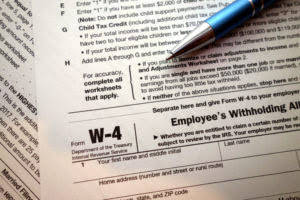When it’s time to review the income summary, Xenett highlights any inconsistencies, providing an extra layer of assurance that everything is accurate before you close the books. When it’s time to transfer your income summary to retained earnings, take a moment to carefully review everything. This process helps ensure that all income and expenses are accurately recorded, allowing for a fresh start in the next period. For example, if you have a net income of $20,000, you’ll debit income summary and credit retained earnings by that amount. Closing entries might seem like an extra step, but they’re crucial for keeping your financial records clean and accurate. Think of closing entries as a way to reset your accounting books at the end of a period, whether that’s monthly, quarterly, or annually.
- To close expenses, we simply credit the expense accounts and debit Income Summary.
- It automates the reconciliation process, flagging any unbalanced accounts as transactions come in.
- The income summary account must be credited and retained earnings reduced through a debit in the event of a loss for the period.
- For partnerships, each partners’ capital account will be credited based on the agreement of the partnership (for example, 50% to Partner A, 30% to B, and 20% to C).
- The total of the income summary account after the all temporary accounts have been close should be equal to the net income for the period.
This ensures the balance sheet is accurate and shows how much profit the business has kept over time. For example, imagine not properly closing revenue accounts at year’s end. Closing these accounts ensures you don’t carry over old data, keeping everything clean for the new period. At the end of the period, you move these balances into a holding account called income summary. In this guide, I’ll walk you through the ins and outs of closing entries, using real-world examples to illustrate the process.
Company
The Income Summary account temporarily holds all revenues and expenses to calculate net income or net loss before closing it to Retained Earnings. From the Deskera “Financial Year Closing” tab, you can easily choose the duration of your accounting closing period and the type of permanent account you’ll be closing your books to. Thus, the income summary temporarily holds only revenue and expense balances. To close the drawing account to the capital account, we credit the drawing account and debit the capital account. This is closed by doing the opposite – debit the capital account (decreasing the capital balance) and credit Income Summary.
Since the dividends account is not an income statement account, it is directly moved to the retained earnings account. Closing entries are journal entries made at the end of an accounting period, that transfer temporary account balances into a permanent account. Closing journal entries are made at the end of an accounting period to prepare the accounting records for the next period. They zero-out the balances of temporary accounts during the current period to come up with fresh slates for the closing entries example transactions in the next period.
Which accounts are closed at the end of an accounting period?
Temporary accounts can either be closed directly to the retained earnings account or to an intermediate account called the income summary account. The income summary account is then closed to the retained earnings account. I know that closing entries are crucial for preparing our financial records at the end of an accounting period. On the balance sheet side, closing entries move everything into retained earnings, which is a permanent account.
Then, head over to our guide on journalizing transactions, with definitions and examples for business. Income and expenses are closed to a temporary clearing account, usually Income Summary. Afterwards, withdrawal or dividend accounts are also closed to the capital account. To close expenses, we simply credit the expense accounts and debit Income Summary. Remember that all revenue, sales, income, and gain accounts are closed in this entry. The net balance of the income summary account would be the net profit or net loss incurred during the period.
Temporary accounts include all revenue and expense accounts, and also withdrawal accounts of owner/s in the case of sole proprietorships and partnerships (dividends for corporations). All of Paul’s revenue or income accounts are debited and credited to the income summary account. This resets the income accounts to zero and prepares them for the next year. An accounting period is any duration of time that’s covered by financial statements. It can be a calendar year for one business while another business might use a fiscal quarter. Then, you do the same for expenses, but in reverse—debit the income summary for $60,000 and credit the expense accounts to zero them out.
Everything to Run Your Business
Think of this as putting the finishing touches on your financial report—making sure every cent is where it’s supposed to be. When the period ends, you don’t just want to know the totals—you need the numbers to be 100% right because even small mistakes can snowball into major problems. This comprehensive accounting glossary defines essential accounting terms. Access and download collection of free Templates to help power your productivity and performance.
Create a free account to unlock this Template
Temporary accounts, also known as nominal accounts, are accounts that track financial transactions and activities over a specific accounting period. These accounts are “temporary” because they start each accounting period with a zero balance and are used to accumulate data for that period only. At the end of the accounting period, the balances in these accounts are transferred to permanent accounts, resetting the temporary accounts to zero for the next period. Now that all the temporary accounts are closed, the income summary account should have a balance equal to the net income shown on Paul’s income statement. Now Paul must close the income summary account to retained earnings in the next step of the closing entries.
Close all dividend or withdrawal accounts
If they aren’t reset, you could easily mix up past and future numbers, leading to confusion and inaccuracies in your financial reports. Then, just pick the specific date and year you want the closing process to take place, and you’re done! In just a few clicks, the entire financial year closing is streamlined for you. That’s why most business owners avoid the struggle by investing in cloud accounting software instead. The Income Summary balance is ultimately closed to the capital account.
At the end of the accounting year 2018, the expense account needs to be credited to clear its balances, and the Income summary account should be debited. In a service company, after all revenues and expenses have been closed into the income summary, any remaining balance (your net income) will be transferred to retained earnings. After these entries, all temporary accounts (revenue, expenses, dividends) will have zero balances, and the net income and dividends will be reflected in the Retained Earnings account.
All drawing accounts are closed to the respective capital accounts at the end of the accounting period. Closing all temporary accounts to the income summary account leaves an audit trail for accountants to follow. The total of the income summary account after the all temporary accounts have been close should be equal to the net income for the period.
If you have questions or want to share your own tips and tricks, don’t be shy—let’s keep the conversation going. It automates much of the reconciliation work, ensuring you catch discrepancies early and keep your accounts aligned. I recommend taking your time here to ensure everything adds up correctly. I always set aside time to review and confirm that every transaction is accounted for.
Manually creating your closing entries can be a tiresome and time-consuming process. And unless you’re extremely knowledgeable in how the accounting cycle works, it’s likely you’ll make a few accounting errors along the way. After the posting of this closing entry, the income summary now has a credit balance of $14,750 ($70,400 credit posted minus the $55,650 debit posted).











